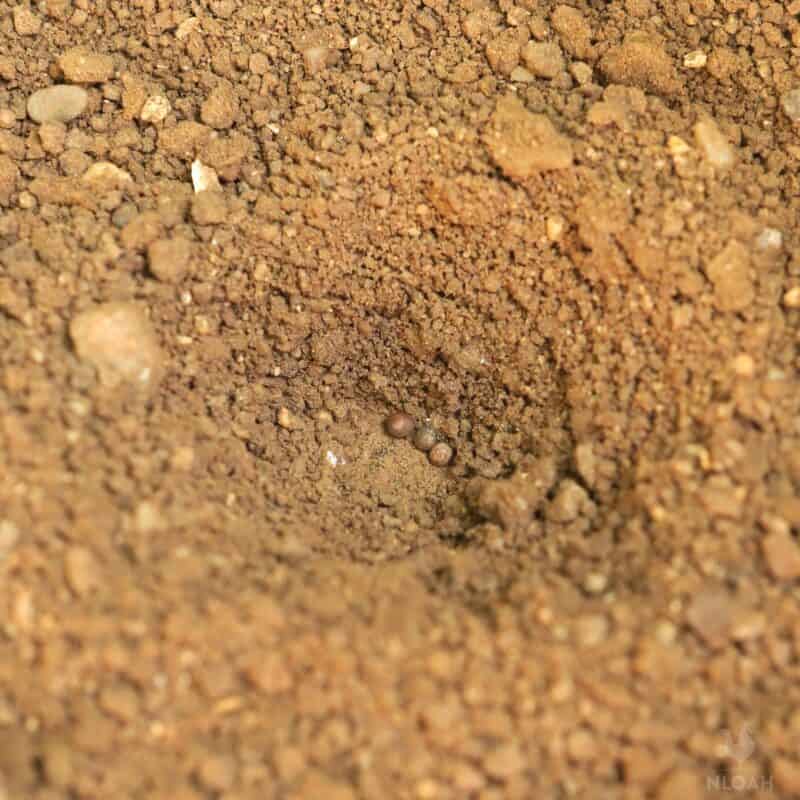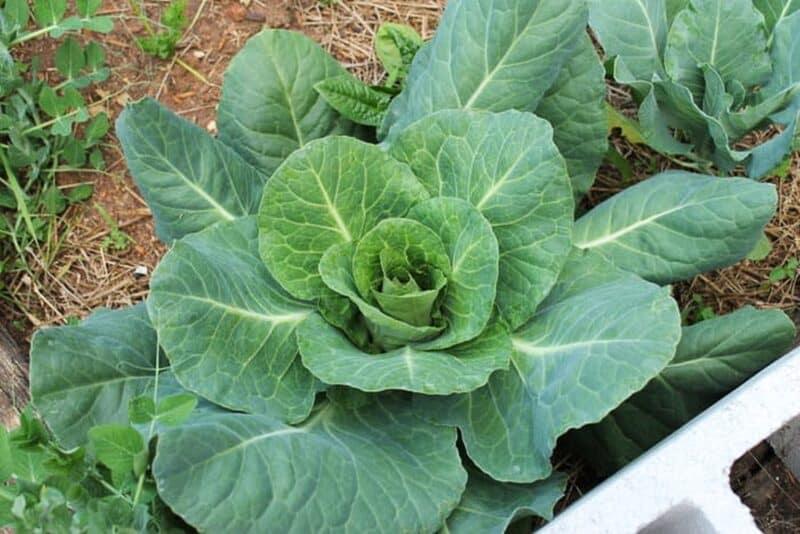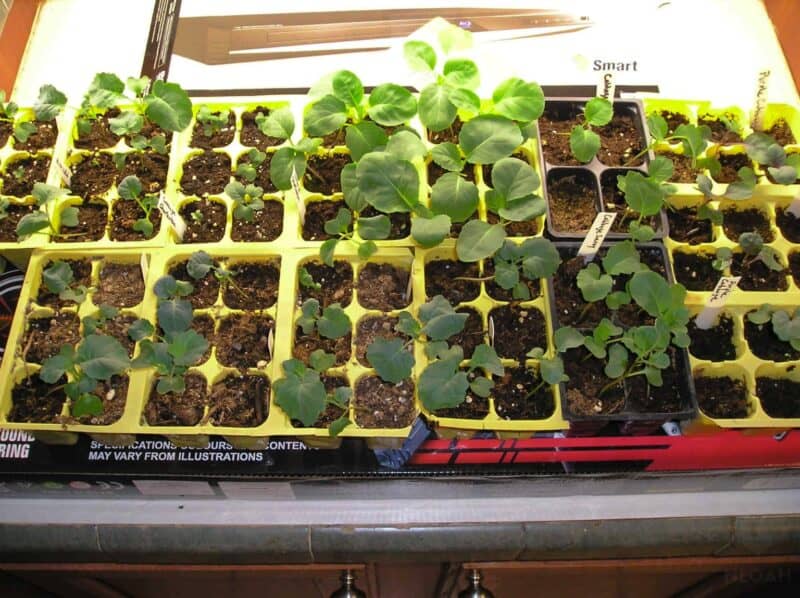Leafy vegetables are always one of the best choices for your garden. They are super versatile in the kitchen and very easy to grow in abundance.

Whether you like lettuce, cabbage, spinach, or something else, there is always going to be a variety that will work where you are and in your garden setup.
But today we are looking at cabbage, and specifically starting it from seed. How many cabbage seeds should you put in each hole?
Plant 2-3 cabbage seeds in each hole, but no more than three.
Not all cabbage seeds will germinate, but planting more than three in each hole can cause problems. If multiple seeds germinate, you can cut off seedlings at the soil level and leave them alone.
Cabbage is generally pretty easy to start from seed, but the number one mistake that beginning gardeners make is only putting one seed in a hole.
Sadly, even when using fresh, good seeds some cabbage seeds just don’t germinate and that means you need to plant multiples as a backup plan.
As long as you can do this, you shouldn’t have any trouble growing a great harvest of cabbage. I will tell you more below…
How Deep Should You Plant Cabbage Seeds?
You only need to plant your cabbage seeds about a quarter of an inch deep. Not very deep at all, but make sure you leave lots of room between plants!
Depending on the variety, they will need anywhere from 1 ½ to 2 feet in order to grow large and bountiful.
How Wide Should the Hole for Cabbage Seeds Be?
The hole for your cabbage seed does not need to be very wide, about an inch, maybe two at most (that’s 2.5 to 5 cm).
Remember, only plant the seed about a quarter of an inch deep below the surface and do not tightly pack the soil back over the top, just cover it.
What Special Preparations Should You Make When Planting Cabbage Seeds?
Cabbage needs only a few things in order to thrive… Loamy well-drained soil that is mildly acidic or neutral and soil that has lots of organic matter.
Make sure you plant it in a sunny spot that will get at least 6 hours of direct sun a day, but if you’re planting it in a warmer climate you’ll find that most cabbage varieties are quite tolerant of a little shade.
Also, take care to keep the soil moist, and keep it consistently moist! Moist soil will produce cabbage that is crisp, flavorful, and succulent.
Regular, light watering is better than infrequent heavy watering, as lots of variation in soil moisture can lead to your cabbage going bitter or growing irregularly.
A covering of mulch around your cabbage is a great way to help the soil retain moisture and stabilize evaporation.
Also, like onions, cabbage will take a lot of resources out of your soil. Organic fertilizers with an even mix of nitrogen, phosphorus and potassium or compost are great, and should be applied every few weeks to help keep your cabbage well-fed.

How Long Until You Can Harvest Cabbage When Planting from Seed?
Most cabbage varieties will grow from seed to maturity in about 9 weeks, sometimes longer.
But, anytime that the head is fully developed and firm you can harvest them, and it’s not out of the question for them to be ready earlier than that.
Can You Plant Cabbage Seed Indoors?
Yes, you can. Cabbage works wonderfully in an indoor garden so long as you have a large container that can accommodate its mature size.
For your average variety, it will need at least 6 inches (15 cm) on either side and a foot (30 cm) of depth in order to grow properly.

Even better, cabbage seeds can germinate just fine indoors even when it is cool, so you won’t need a heating mat.
Make sure it gets lots of sun near a south-facing window, or else keep it under grow lights for at least 8 hours.
Special Care if Planting Cabbage Seeds Indoors
If you just want to start your cabbage from seeds, you might consider scattering them in a deep tray or rectangular box and then pulling out the seedlings that are growing too close to one another.
But just remember, any that you leave growing too close to their neighbors will grow smaller than those that have more room.
Also, all of the soil requirements for cabbage that apply to growing outdoors apply to growing it indoors.
You only want to just cover the seeds with soil, and cover them very loosely, and make sure the soil is very well drained but constantly moist.
If you plan on moving them outdoors, whether or not you leave them in containers or actually transplant them, you must take the time to harden off the cabbage before doing so. Otherwise, they could suffer from transplant shock and die.
Harden off your cabbage by moving it outside into a shady location for about 2 hours once temperatures are suitable for growth outside.
Bring them back in, and then continue to take them outside in the shade every day for one to two weeks, increasing the time that they stay outside by 30 minutes each time.
At the end of the process, they’ll be ready to stay outside all the time.
Tom has lived and worked on farms and homesteads from the Carolinas to Kentucky and beyond. He is passionate about helping people prepare for tough times by embracing lifestyles of self-sufficiency.
